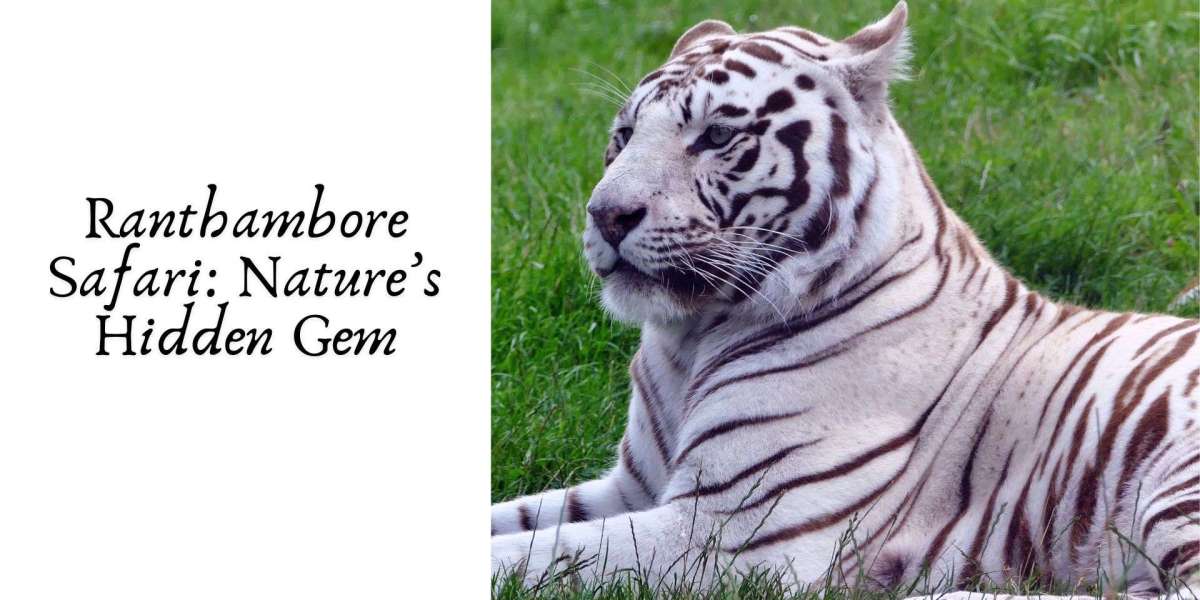Ranthambore Safari | Eye of the Tiger
Nestled in the heart of Rajasthan, Ranthambore Safari stands as a testament to India’s rich biodiversity and commitment to wildlife conservation. This sprawling reserve, once the hunting grounds of the Maharajas of Jaipur, is now one of the premier national parks in India. Famous for its significant tiger population, Ranthambore Safari offers an unparalleled opportunity to witness these majestic creatures in their natural habitat.
The Enchanting Landscape
Ranthambore National Park, spanning over 1,334 square kilometers, is a mosaic of diverse landscapes. From dense forests and open grasslands to serene lakes and rugged hills, the park's topography is as varied as it is beautiful. The ancient Ranthambore Fort, a UNESCO World Heritage Site, adds a historical dimension to the park's natural beauty. This fort, perched on a high rocky outcrop, offers panoramic views of the lush surroundings and serves as a reminder of the region’s storied past.
A Sanctuary for Wildlife
While the Bengal tiger is undoubtedly the star attraction of Ranthambore Safari, the park is home to a plethora of other wildlife species. Leopards, sloth bears, Indian foxes, and an array of deer species such as sambar and chital can be spotted roaming the reserve. The park's lakes and waterholes are frequented by marsh crocodiles and a variety of water birds, making Ranthambore a haven for birdwatchers as well.
The Royal Bengal Tiger: Eye of the Tiger
Ranthambore Safari is one of the best places in India to see the elusive Bengal tiger. The park’s dense forest cover and well-maintained tracks offer optimal conditions for tiger sightings. Visitors are often treated to the sight of these magnificent predators stalking their prey or lounging near waterholes. The thrill of spotting a tiger in the wild is an experience that stays with visitors long after their safari ends.
Conservation Efforts
Ranthambore's success as a tiger reserve is a testament to the effective conservation efforts implemented by park authorities. The Project Tiger initiative, launched in 1973, has played a crucial role in increasing the tiger population in the park. Anti-poaching measures, habitat management, and community engagement programs have further contributed to the conservation of these majestic creatures. The park also collaborates with various NGOs and wildlife organizations to ensure the continued protection of its diverse fauna.
Safari Experience
A safari in Ranthambore is not just about spotting tigers; it’s an immersive experience that connects visitors with nature. The park offers both jeep and canter safaris, each providing a unique way to explore the wilderness. Experienced guides and naturalists accompany visitors, sharing their knowledge of the park’s flora and fauna and enhancing the overall safari experience. Early morning and late afternoon safaris are particularly popular as these are the times when animals are most active.
Best Time to Visit
The best time to visit Ranthambore National Park is between October and June. During these months, the weather is pleasant, and the chances of wildlife sightings are high. The park remains closed from July to September due to the monsoon season, which transforms the landscape into a lush green haven but makes it inaccessible for safaris.
Accommodation and Amenities
Ranthambore offers a range of accommodation options to suit different budgets and preferences. From luxury resorts and heritage hotels to eco-friendly lodges and budget guesthouses, visitors can find a place that meets their needs. Many of these accommodations are located close to the park and offer stunning views of the surrounding landscape. Additionally, they often provide guided tours, wildlife documentaries, and other activities to enhance the safari experience.
The Cultural Connection
Ranthambore is not just about wildlife; it also offers a glimpse into the cultural heritage of Rajasthan. The nearby town of Sawai Madhopur is famous for its traditional crafts, vibrant markets, and local cuisine. Visitors can explore the bustling bazaars, sample delicious Rajasthani dishes, and purchase handmade souvenirs to take back home. The local communities around Ranthambore play a vital role in the conservation efforts, and interacting with them provides a deeper understanding of the region's cultural and natural heritage.
Conclusion
Ranthambore Safari is indeed nature’s hidden gem, offering an unforgettable experience for wildlife enthusiasts, photographers, and nature lovers alike. The park’s rich biodiversity, stunning landscapes, and effective conservation efforts make it a model for wildlife reserves around the world. Whether it’s the thrill of spotting a tiger, the tranquility of the natural surroundings, or the connection with Rajasthan’s cultural heritage, a visit to Ranthambore Safari is a journey into the wild heart of India.







